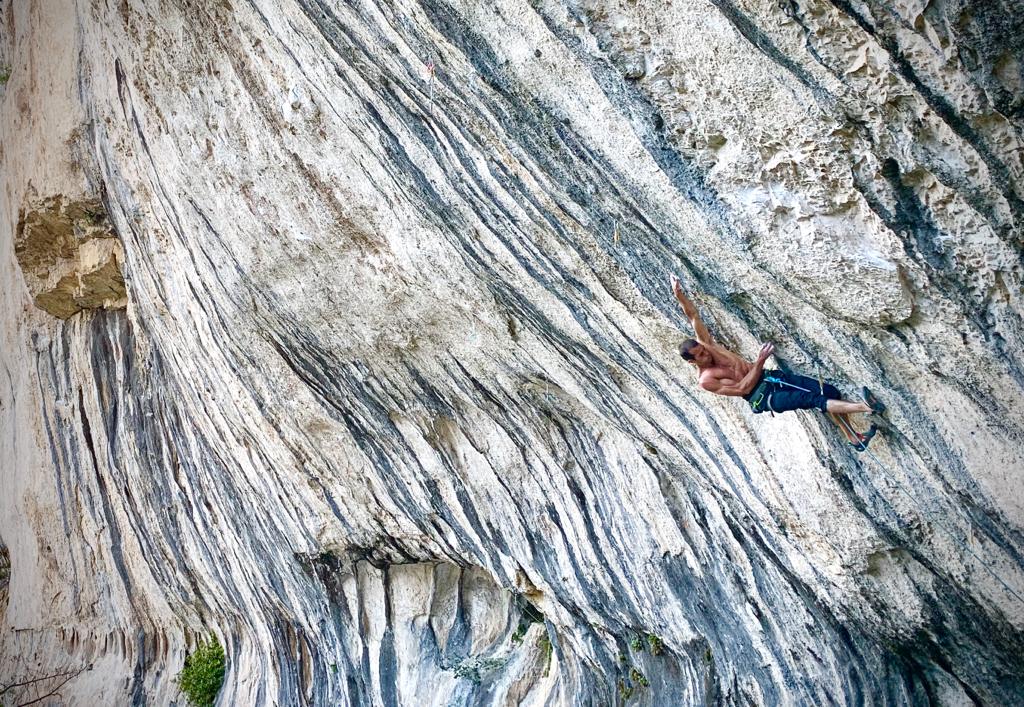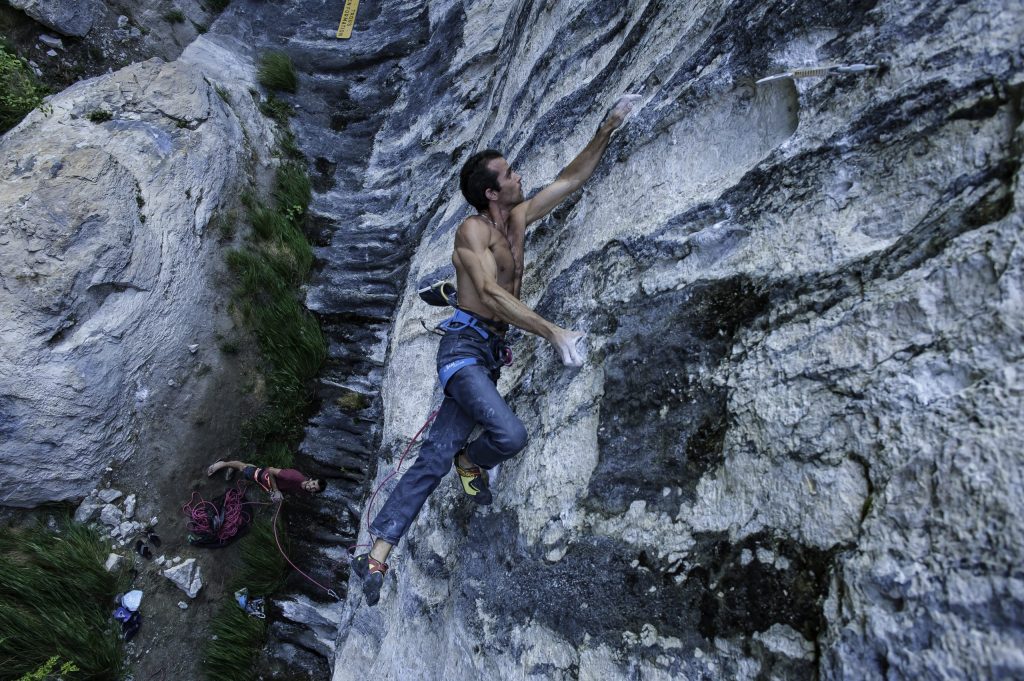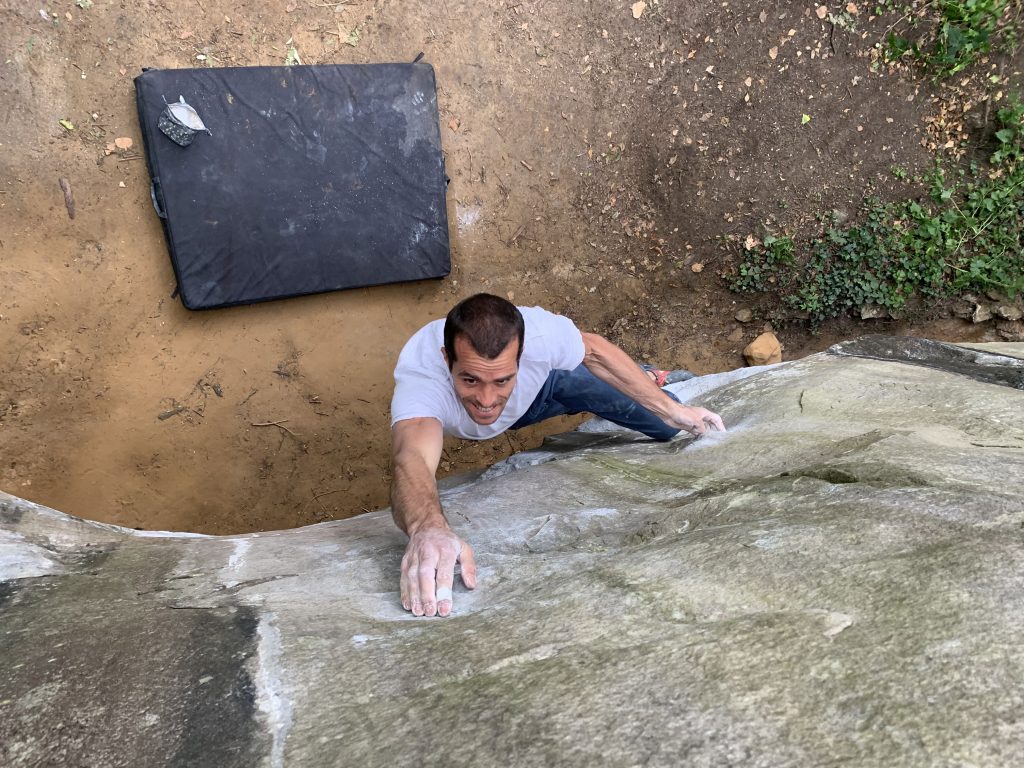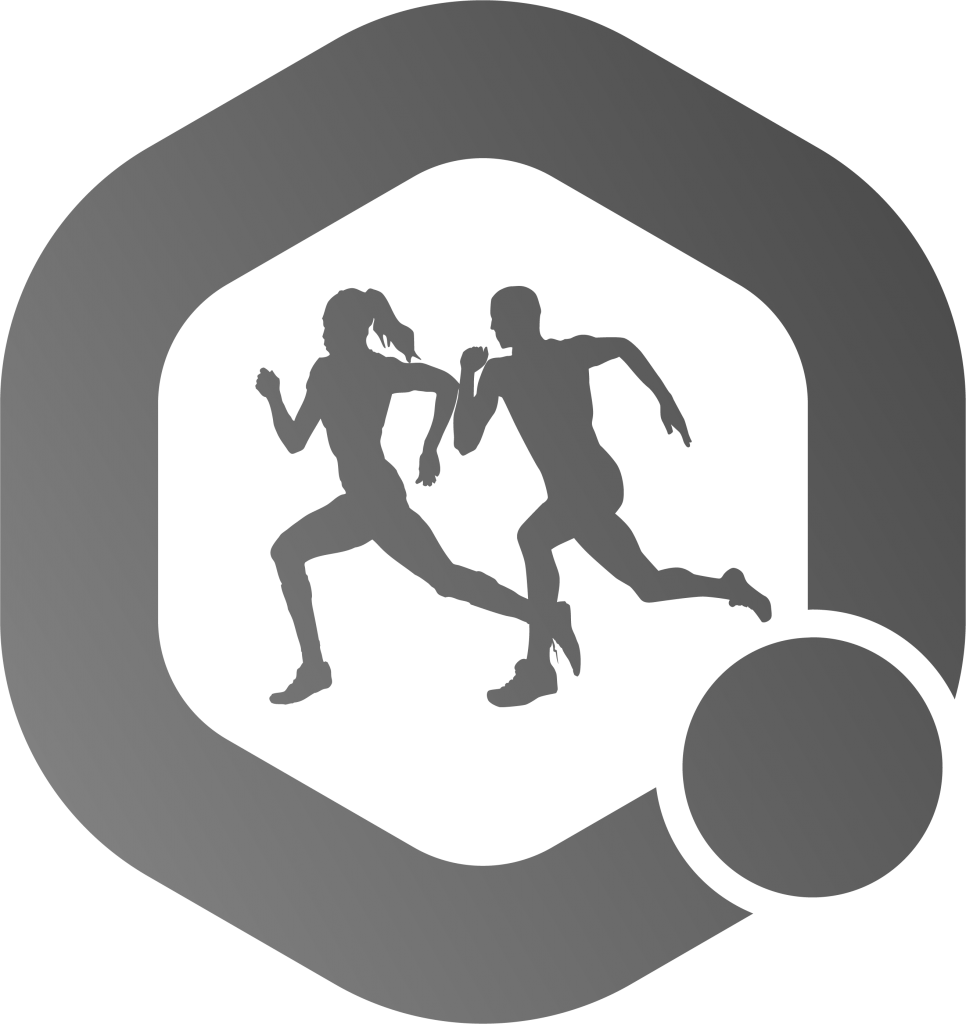Rémi Samyn is the former National Climbing Coach of the French team and an International Federation of Sport Climbing (IFSC) route setter. We caught up with Rémi Samyn to talk about climbing, how necessary it is to plan in advance and decipher the essential techniques to be an international athlete, and more importantly, the coach of one of the finest climbing nations – France.

Zushan Hashmi: How did you end up deciding on setting these sends (one 8C and your first 9A routes) as a target for yourself?
Rémi Samyn: I always had this dream in my head, of one day climbing into the ninth degree. It was a goal I had since I started climbing but I never moved my a*s (I don’t know if I can say this [laughs]).
I was more focused on competition as a climber and then coach of the French climbing team.
Considering that you’re 36, a lot of people would say, this isn’t the ideal goal to set, yet you did, why now?
I was on vacation, in Tonsai (a climbers paradise in Thailand), reflecting on the meaning of my life after having gone through a troubling period.
It was then that I realized I was getting closer to my 40s and that this dream was going to fall apart. The worst thing in life is to have regrets, so I thought, let’s give it a go!
Read our conversation with Iran’s National Climbing coach, Artimes Yeganeh, here.
And what was the thinking process that went into it? (i.e. How did you mentally prepare yourself?)
Mentally, I felt three different phases: At the start of my preparation, the goal seemed so far away that the hardest part was to maintain a maximum level of motivation at each training session to never give up.
When I climbed Sang Neuf for the first time I was as excited as a 3-year-old on Christmas. It was the easiest period, mentally, and my preparation was based on a lot of visualisation work.
How about the physical preparation and training prior to it?
The physical preparation was a long term process and a critical aspect for a climber of my profile. I have been climbing for over 25 years, I have a lot of experience mentally and technically, so my performance would essentially be dependant on my physical level.

It asked me to organize my training plan very precisely. This allowed me to put into practice the physical trainer diploma that I obtained a few years ago.
I made lots of new discoveries and it worked well. I also had to lose weight and therefore changed my diet to become physically stronger.
How did your experience as a coach and route setter assist with the send, and how does it assist you generally across any of your routes?
My experience as a coach and a personal trainer helped me organise my training program properly. It also allowed me to develop a culture of success, internally, as I have seen pressure get the best of athletes in so many instances.
As route setters, we are always in the process of dissecting the movement which helped to be creative in order to find new beta. This is what I did in Sang Neuf, since I found a method that had never been done before.
There are various physical aspects that a climber needs to develop and work on regularly. In your opinion, is there a standout area that climbers should focus on more than others (i.e. resilience, flexibility, strength etc) or is it more holistic? Why?
Climbing is an activity that is extremely varied. Climbing styles can be very different and therefore require completely different physical qualities.
It’s very difficult to highlight one over the other because it depends on your personal profile and your goals. But if there were to be only one, the one which is the specificity of climbing, I would say finger strength.

How about specifically with outdoor climbing, whether it is trad routes or multi-pitching, what are the most important aspects of one’s training and practice process?
I think you should never forget that the most important aspect of the training process is to enjoy and have fun at each session.
If this is already the case, then the essential elements are: identify realistic, motivating goals and have an appropriate strategy for these projects.
It is also important to surround yourself with the right people, avoid climbing alone all the time, to maintain a dynamic that helps to put intensity in your training.
With the Olympics around the corner, you still find a lot of professional climbers who are going at it individually, in some parts of the world, this is the only option. Why should a climber have a coach?
For me, it’s much more effective to have a coach, because alone we tend to get stuck into harmful routines. We take all blame for what does not seem to work, and we are oblivious to what works and what doesn’t.
On the other hand, progress inevitably comes from all the intensity of training that a coach gives us. Knowing is one thing, hearing it out loud from someone else is a different thing.
Progressing implies analysing things objectively, which is very difficult to do by yourself without a trainer.
Don’t fall into the trap of evaluating your physical level at each training session. It is the worst thing to do.
And if, for some reason, they cannot. In terms of developing a process, what do you suggest?
If it’s not possible I would advise writing as many things as possible to keep the objective and dated data. These writings can be used to make intermediate assessments and to readjust the training plan.
Another tip is to fix a goal for the next month, do your training cycle and take stock only at the end of the month. Above all, don’t fall into the trap of evaluating your physical level at each training session. It is the worst thing to do.
What about managing injuries? Often, lack of rest and over-training leads to this, but what do you think is the key to managing and avoiding injuries?
Injuries are often the result of several factors. The most common reasons are severe fatigue, complex movements and high level of intensity. You should avoid combining these 3 factors at the same time, on the same day and at the same training session.
In addition to this, it is also strongly recommended to include gentle sessions of muscle reinforcement, mobility and preparation, as a training routine, once or twice a week.
There are also external factors such as temperature, accidents, individual genetics or even health practices or diet that can impact an athlete and injure them.

Now that you’ve achieved one of your major goals for this year, what is the next step?
For the moment I am taking a little time to decompress this important investment of the last 6 months. The time to enjoy this personal success and share it with others to transmit the motivation to follow their dreams.
In a few months, I aim to push higher, because I think that I am not yet at my limit … to be continued!
Any other thoughts/comments?
Thank you very much to Sportageous for giving me the opportunity to share my experience with the Australian climbing community. My last words will be – ‘Don’t limit your challenges, challenge your limits.’

